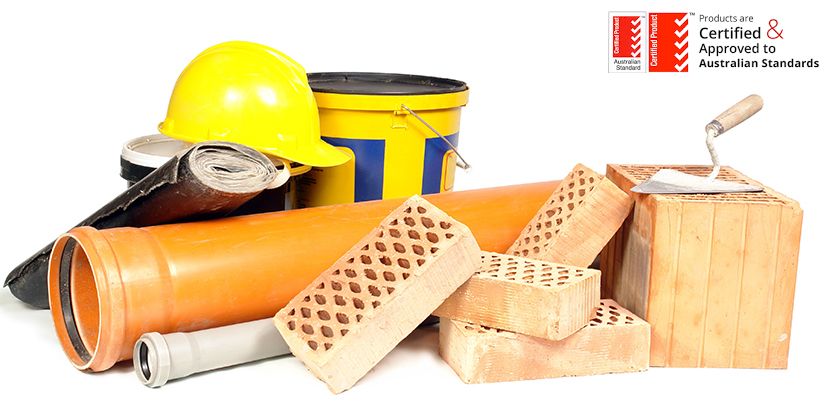Australian Standards are used to ensure the building products we use meet the minimum recommended requirements. However, it surprises many people to know that any manufacturer can claim an Australian Standard for their products without having to prove it.
If you’ve decided to owner build you should want to do it right. You research the designs, actively seek the cheapest quotes to complete the job within budget. But how do you know what the best materials are? In fact, how do you even know that the materials will even do the job intended? Surely the answer is simple: make sure it meets the recommended (or mandatory) requirements as set out by Standards Australia (SA) some are made into law through the Building Act and Building Code of Australia. From there, it’s a questions of what you can afford.
Sadly, it’s not that simple, because in Australia there is currently no enforcing of performance claims for building material until after the fact. That means any manufacturer can claim its product meets the relevant Australian Standard without actually having to prove it and can only be held accountable if the product fails in use. Although this is still a serious deterrent to local manufacturers who could suffer significant damage financially and in reputation by going through litigation, it is proving to be less of a concern to small importers with only a few tangible assets in Australia.
Simon Dorrier of the Engineered Wood Products Association of Australia has campaigned tirelessly for this industry in the area of product compliance. “Any manufacturer anywhere on the planet can put an Australian Standard number on anything they make. Standards Australia does not authorise, license or approve the use of its marks, so anyone can use them without any testing or proof of meeting the requirements” So essentially it is not so much a guarantee but rather a manufacturers claim. This process is obviously open to abuse. Reputable manufacturers conduct their own testing and ensure their products meet relevant Standards. However, less reputable companies can exploit the trust of consumers. Products that fail to meet the claimed Standard can trigger prosecution only after the fact. That means, quite literally, after something has failed in performance or collapsed.
This is potentially extremely dangerous to you as a home owner and anyone who lives in or visits the house. Furthermore, if a product has been brought in by a small importer, there is very little that can be done to gain compensation. “Australian manufacturers will conduct their own testing to ensure the product meets the claimed Standard.” Simon says. “They have to – or they are open to litigation that could cost them a lot of money or ruin their reputation. But if you have small importing companies with no real tangible assets, then it’s very hard to take any action against them. They can simply shut the business down and walk away.” Faulty products may not be deliberately manufactured that way but as long as there is no need for any formal proof of the claims made, the system can be exploited. A friend of mine was doing some business in Asia recently, and when he went to a manufacturing plant he was asked what label he wanted put on the products. Many examples of non-compliant products occur in base building products such as engineered wood products or waterproofing systems that are hidden beneath internal plasterboard or decorative tiles. Because these products are not on display, many people will take the cheaper option in the thought they will never be seen. Ironically, these products can lead to the most substantial damage. However, the problems is not restricted to timber. Windows manufacturers, roof fasteners, plumbing product manufacturers and insulation companies – to name just a few – have all expressed concern and taken steps to protect their industries.
As an owner builder this is a very serious issue. Logically, anyone who decides to owner build will be doing so to reside in it personally. And clearly a failed product will result in frustration at the very least and a mountain of safety and legal troubles at the worst. Furthermore, as an owner builder you will retain the legal responsibility of the property throughout the first 10 years even if you have on-sold it and moved out. Although the issue of responsibility in product compliance can be a little grey, it is undoubtedly an unnecessary risk and an unwanted concern.
Thankfully, there are steps that can be taken to ensure you are getting the product you need. As a general rule, major manufacturers, Australian manufacturers and member of industry associations will voluntarily prove their products meet their stated claims – quite simply, they can’t afford not to. The right decisions will give you many years of honest service, a safe and stable building and – not least of all – peace of mind.

